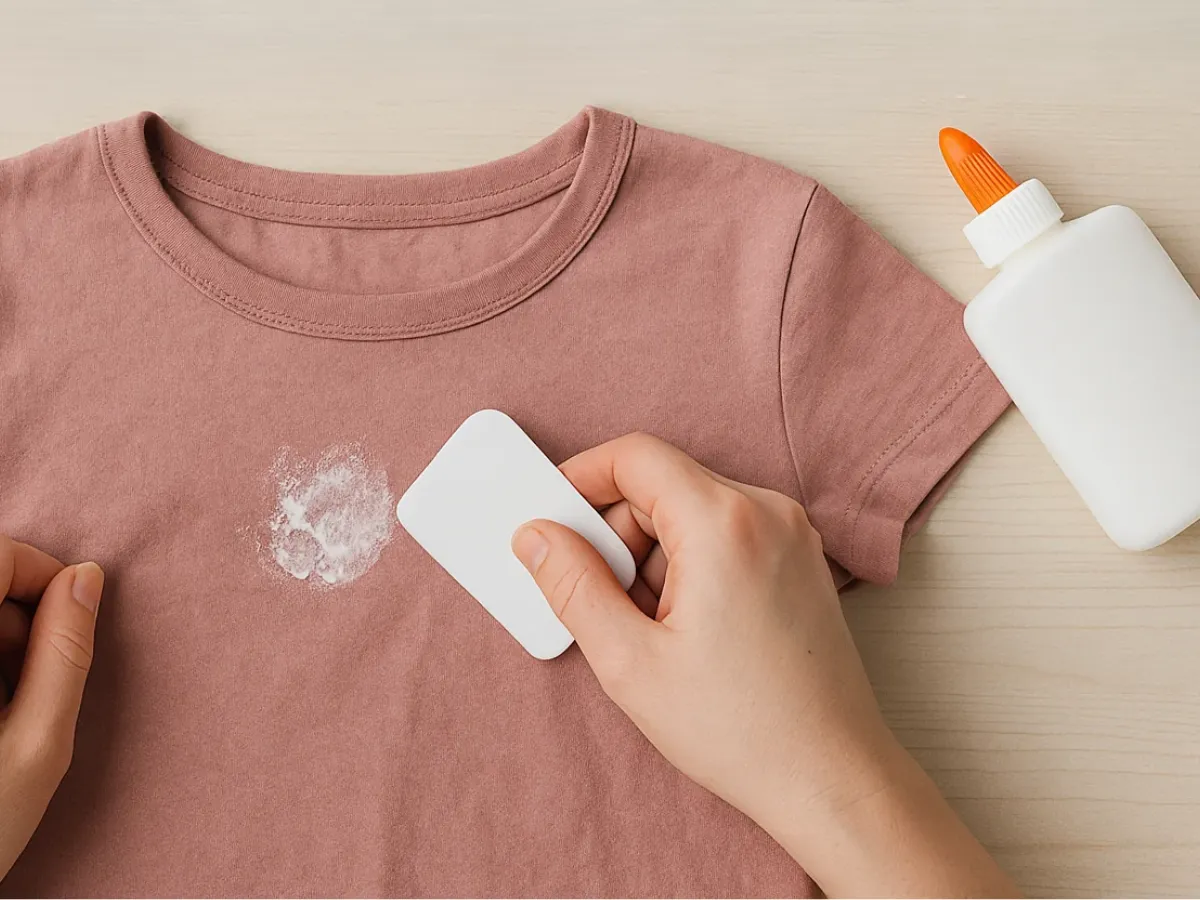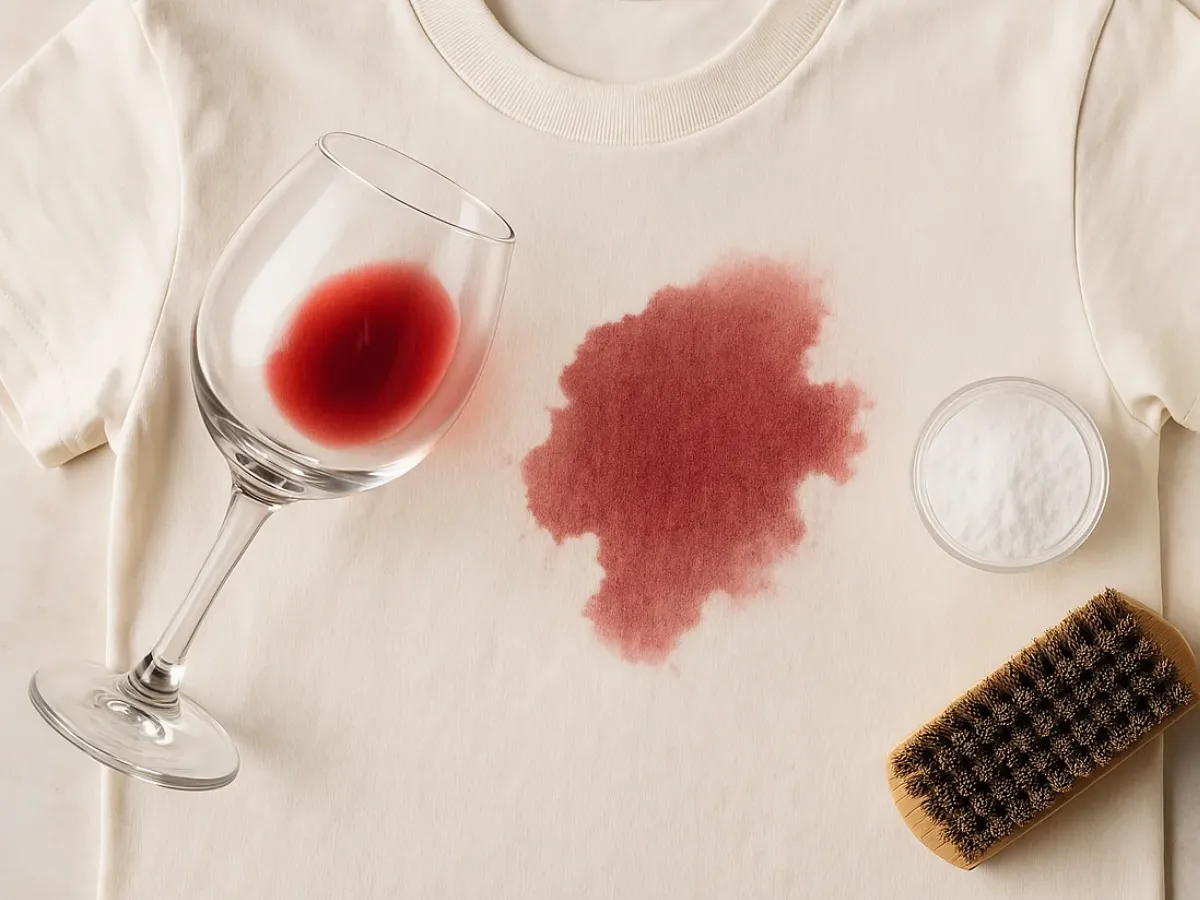Definitive Guide: How to Remove Blood Stains from Clothes (Even Dried Ones!)
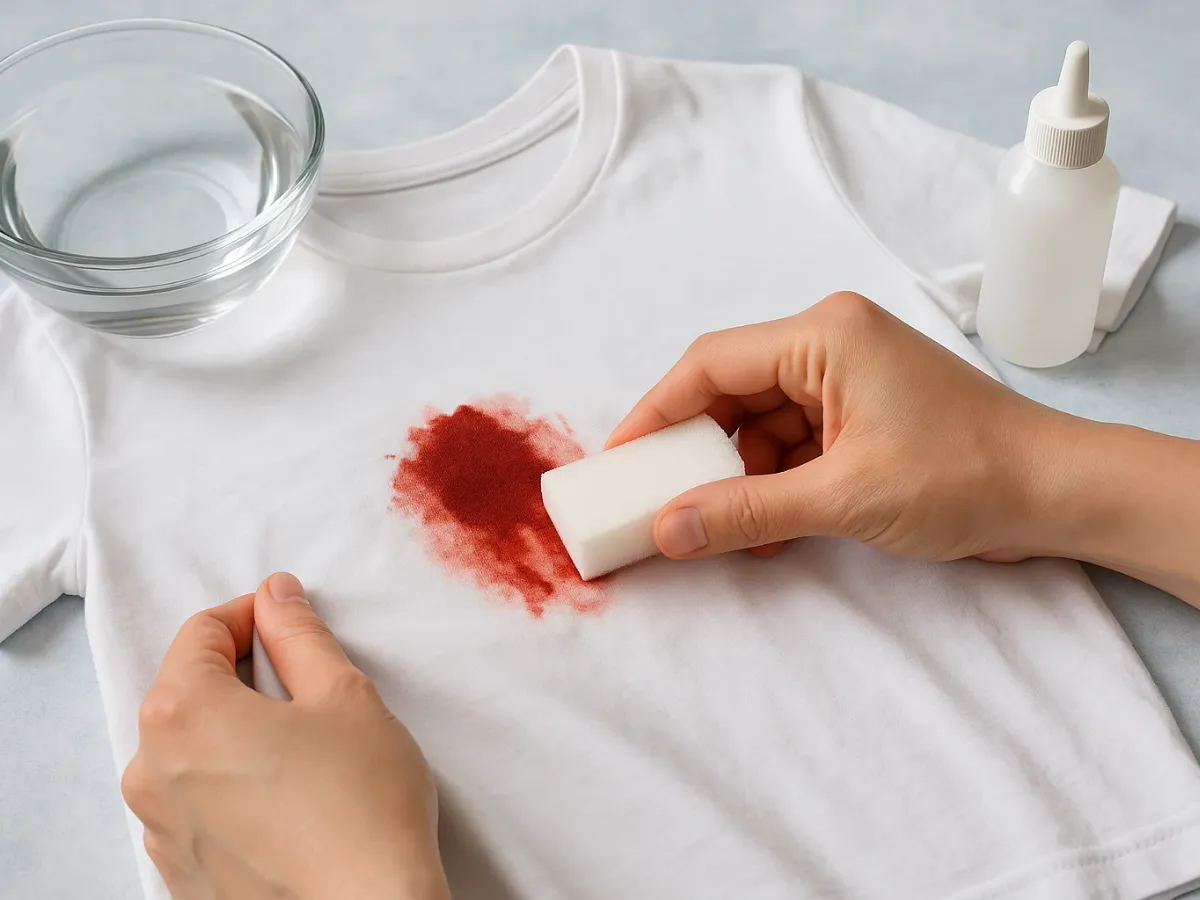
A small cut, an unexpected injury, menstruation... Blood stains on clothes are a common and often frustrating accident. They might seem difficult to remove, especially if you don't act immediately. But don't worry, there's hope! With the right methods and a little patience, you can learn how to remove blood stains from clothes, both fresh and dried, and bring your favorite garments back to life.
In this comprehensive guide, we'll reveal the most effective secrets and tricks, from home remedies to professional tips, so those red stains stop being a nightmare. Get ready to say goodbye to blood on your fabrics!
The Undisputed Golden Rule: Always Cold Water!
Before diving into specific methods, there's one fundamental rule you must commit to memory: ALWAYS use cold water to treat blood stains. Hot water has the opposite effect: it cooks the proteins in the blood, causing them to set permanently into the fabric fibers. It's the number one mistake and the hardest to reverse!
So, whether it's a fresh stain or one that's been there for days, your first instinct should be cold water. Place the garment under the tap and let cold water run through the stain (from the back of the fabric outwards, if possible) to help flush out as much blood as possible.
Act Fast: How to Treat Fresh Blood Stains
If you're lucky enough to catch the stain right when it happens, your chances of removing it completely increase exponentially. Follow these steps:
- Immediate Rinse: As mentioned, quickly take the garment to running cold water. Don't rub vigorously at first; let the water do the initial work.
- Mild Soap (Optional): If water alone doesn't remove everything, you can apply a small amount of liquid hand soap or mild detergent directly onto the wet stain. Rub very gently with your fingers or a clean cloth.
- Final Rinse: Rinse again thoroughly with cold water until the water runs clear.
- Inspection: Check the area against the light. If no traces remain, you can proceed to wash the garment as usual (in cold or lukewarm water, according to the label!). If marks still remain, move on to methods for persistent stains.
The Challenge: Removing Dried or Old Blood Stains
This is where the battle gets interesting. Dried blood stains require more work because the blood has already adhered to the fibers. But don't throw in the towel; these methods can work wonders!
Essential Pre-Step: Soaking
Before applying any specific treatment, it's crucial to rehydrate the stain. Completely submerge the garment in a basin or sink with cold water for at least 30 minutes, or even several hours (or overnight) for very old and stubborn stains. This will soften the dried blood and make it more receptive to cleaning products.
Method 1: Hydrogen Peroxide - The Effective Classic
Hydrogen peroxide is one of the most popular and effective home remedies for removing blood stains, especially on white or light-colored clothing. Its effervescent action helps lift the blood from the fibers.
- Test First: Important! Before applying generously, test on an inner seam or an inconspicuous area of the garment, especially if it's colored or delicate. Hydrogen peroxide can have a slight bleaching effect.
- Application: Pour a small amount of hydrogen peroxide (standard 3% pharmacy grade) directly onto the soaked stain. You'll see it start to bubble.
- Wait and Repeat: Let it work for a few minutes. You can blot the foam with a clean cloth and repeat the application if the stain persists. Don't rub hard; let the product work.
- Rinse Well: Once the stain has disappeared or significantly faded, rinse the garment thoroughly with cold water.
- Wash as Usual: Proceed to wash the garment in the washing machine with your regular detergent, always on a cold or lukewarm cycle.
Caution: Avoid using hydrogen peroxide on very delicate fabrics like silk or pure wool without thorough testing.
Method 2: Baking Soda - The Gentle Power
Baking soda is another excellent option, gentler than hydrogen peroxide and generally safe for most fabrics and colors. It works by creating a paste that absorbs and lifts the stain.
- Prepare the Paste: Mix baking soda with a little cold water to form a thick paste (similar consistency to toothpaste). Some people prefer using white vinegar instead of water to enhance the cleaning effect, but test first in a hidden area if using vinegar.
- Apply Generously: Completely cover the stain (previously soaked) with the baking soda paste.
- Let it Sit: Allow the paste to rest on the stain for at least 30 minutes, or even until it dries completely for tough stains.
- Remove and Rub (Gently): Remove the dried paste with a soft brush (like an old toothbrush) or a damp cloth. You can rub the area very gently.
- Rinse and Wash: Rinse the garment with cold water and wash as usual in the washing machine.
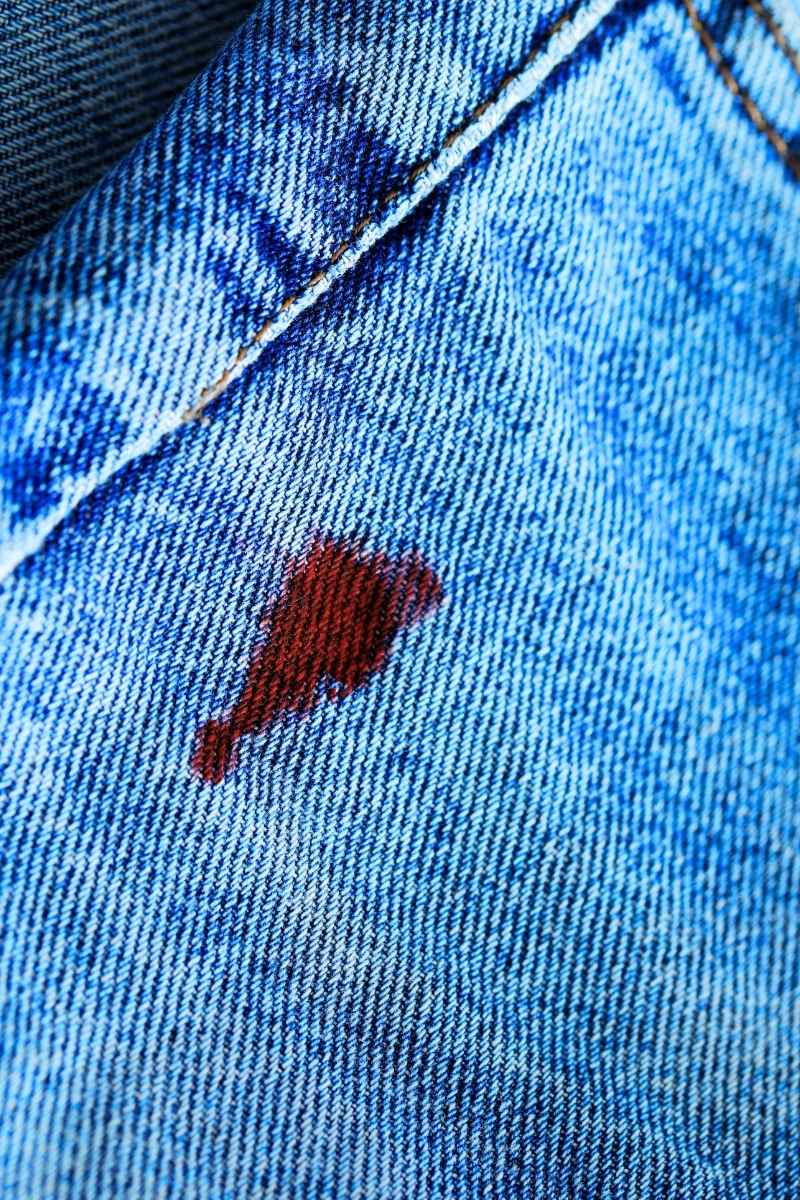
Method 3: Enzymatic Detergents - The Professional Solution
Stain removers or detergents containing enzymes are specifically designed to break down protein-based stains, such as blood, egg, or grass. They are a very effective option, especially for stubborn stains.
- Look for Enzymes: Check your detergent label or look for a specific stain remover that indicates "enzymatic" or mentions "protease" among its ingredients.
- Pre-treatment: Apply the product directly to the wet stain (after soaking). Follow the manufacturer's instructions regarding application time (usually between 5 and 15 minutes).
- Rub Gently (Optional): You can lightly rub the area with your fingers or a soft brush before washing.
- Wash: Wash the garment in the washing machine, preferably with a detergent that also contains enzymes, at the highest temperature allowed by the care label (but prioritize cold or lukewarm water if the stain was very persistent).
Also, if after washing you notice other types of marks or residues remain, you can check our tips on how to remove difficult and old stains.
Other Home Remedies (Use with Caution)
- Salt: For delicate fabrics, a paste of salt and cold water might help. Apply, let dry, and gently brush off before rinsing and washing.
- White Toothpaste: A classic trick for dried stains. Apply white paste (not gel), let dry, remove with cold water, and wash. Its effectiveness varies.
- Dish Soap (e.g., Dawn): Some liquid dish soaps can help break down grease and proteins. Apply a drop, rub gently, let sit for a few minutes, rinse, and wash.
Menstrual Blood Stains
Menstrual blood stains are treated exactly the same as any other blood stain. The key is still to act quickly with cold water. If the stain is dry on underwear, soaking followed by applying hydrogen peroxide (if the garment is white or light-colored and durable) or baking soda is usually very effective. For items like period underwear, always follow the manufacturer's specific instructions, but the initial cold rinse is universal.
Mistakes to Avoid When Removing Blood Stains
- NEVER HOT WATER! (We repeat because it's crucial).
- Don't Rub Excessively: You can damage the fabric fibers and spread the stain. Be patient and let the products work.
- Avoid Bleach on Colored Clothes: Chlorine bleach (sodium hypochlorite) is effective on sturdy white cotton, but it will irreparably discolor colored garments. Use oxygen-based bleaches for colors if necessary. Learn more about whitening with bleach here.
- Don't Put in Dryer if Stain Persists: The heat from the dryer will set any remaining stain remnants. Make sure the stain is completely gone after washing and before drying. If unsure, air dry the garment.
- Read the Care Label: Before applying any product, check the garment's label. It provides vital information about fabric composition and recommended washing temperatures. Decipher washing labels here.
When to Give Up or Seek Professional Help?
Although these methods are very effective, some old blood stains on delicate fabrics might be impossible to remove completely at home. If you've tried several methods without success, or if it's a very valuable or delicate garment (like pure silk, velvet, or items with embellishments), consider taking it to a professional dry cleaner.
For everyday stains, persistence usually pays off. You might need to repeat the soaking and treatment process a couple of times.
Stubborn Stains? Trust the Professionals!
Battling blood stains can be exhausting. If you prefer a quick and effective solution, visit us at LaColada Self-Service Laundry Ponferrada! Our industrial washers and dryers, along with professional detergents (including enzymatic options), offer a deep clean that can make all the difference with tough stains. Do your laundry easily and let our machines do the heavy lifting!
Find Your Nearest LaColada LaundryOther Cleaning Tips You Might Find Interesting
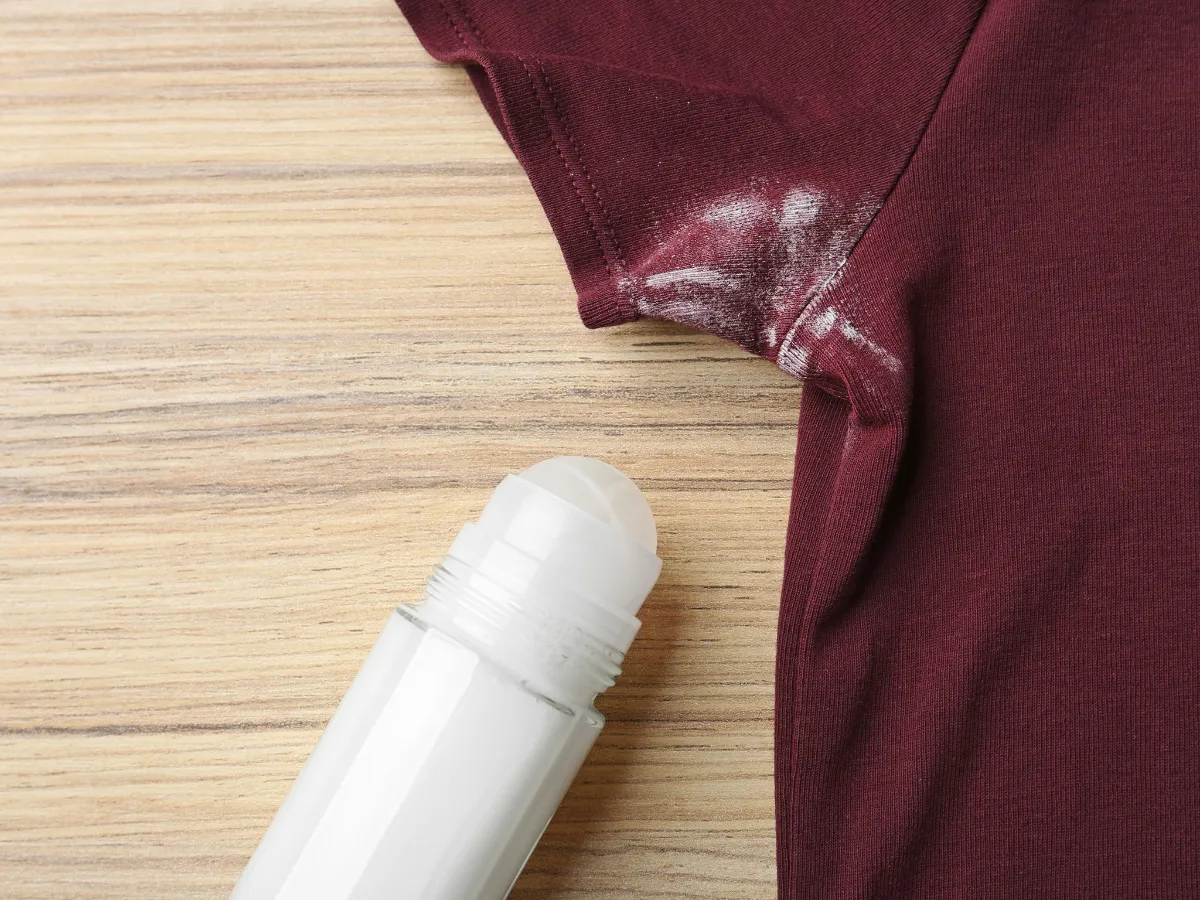
How to Remove Deodorant Stains
Eliminate those annoying white or yellow marks.
